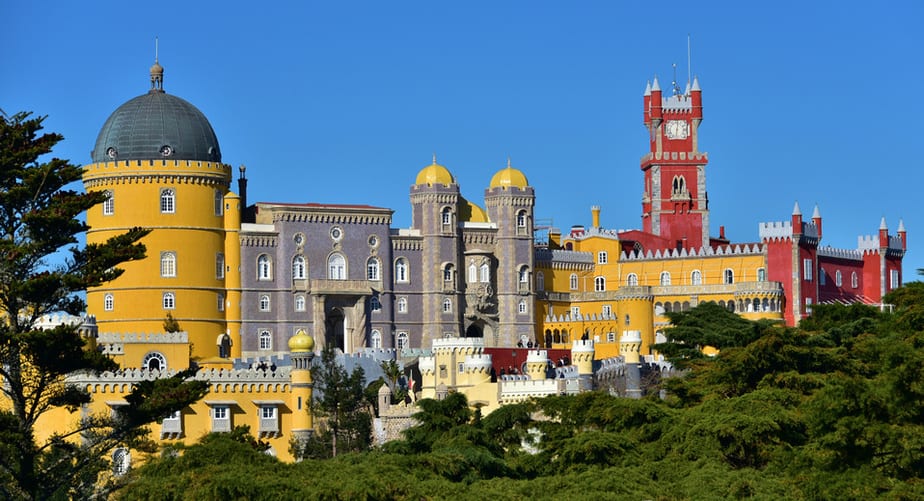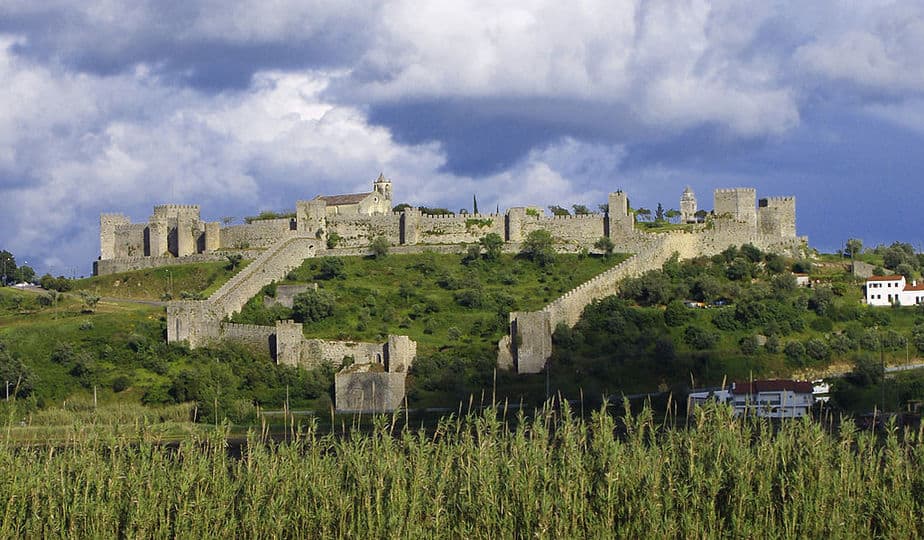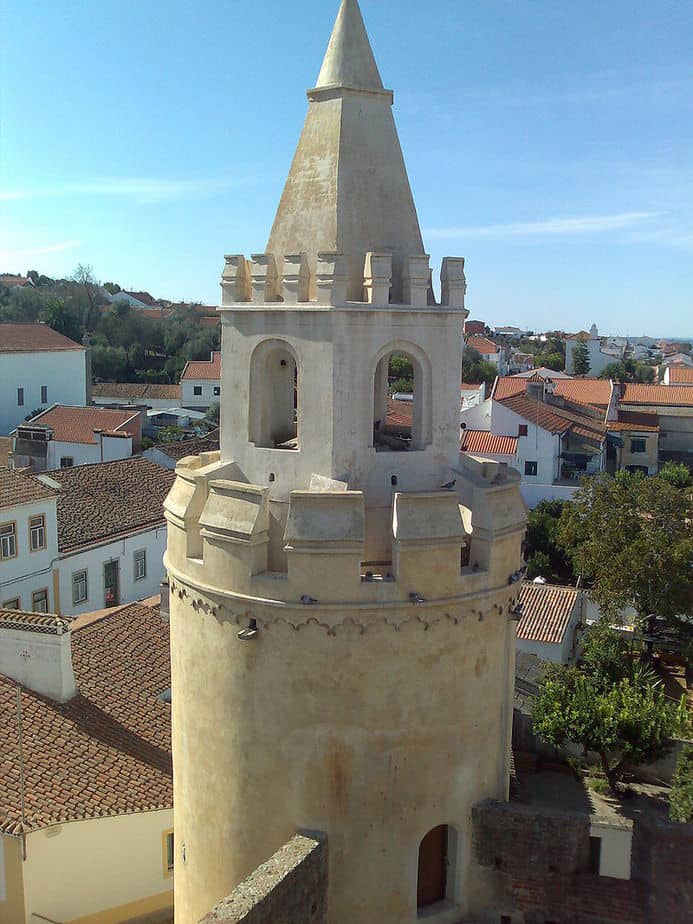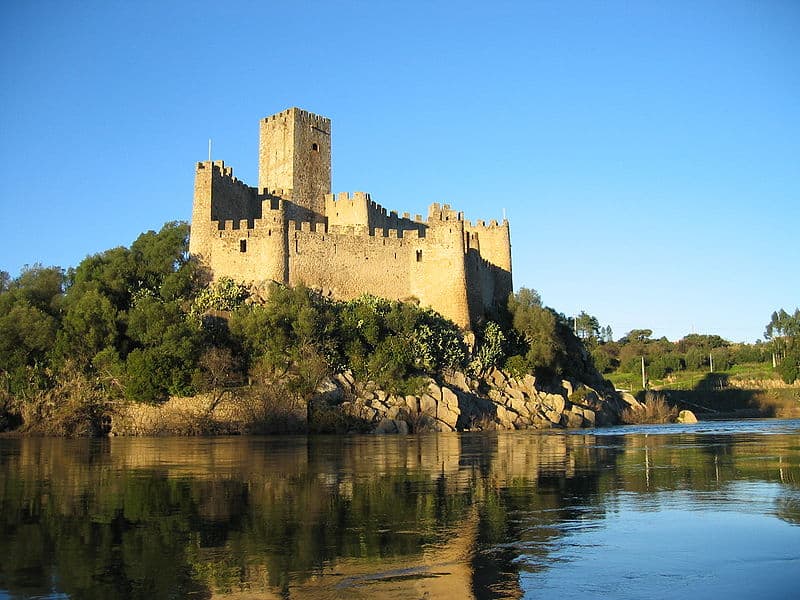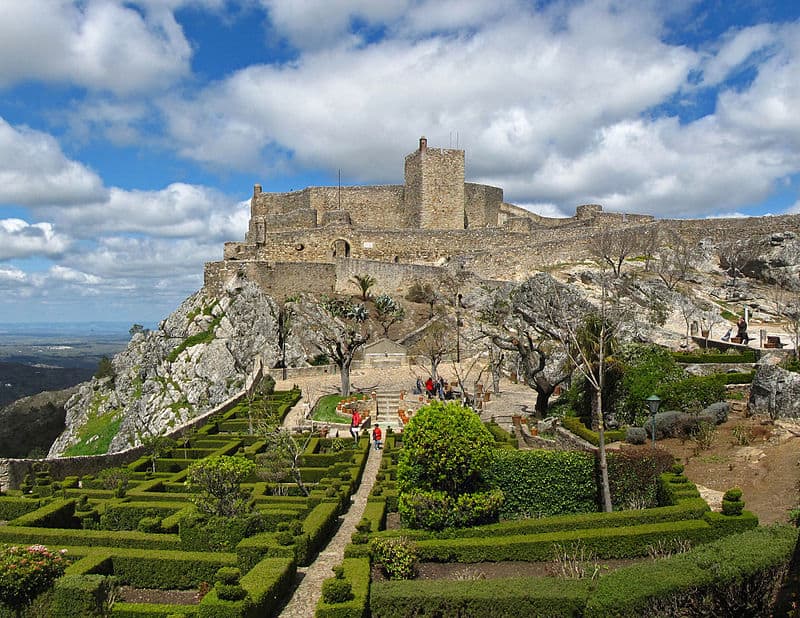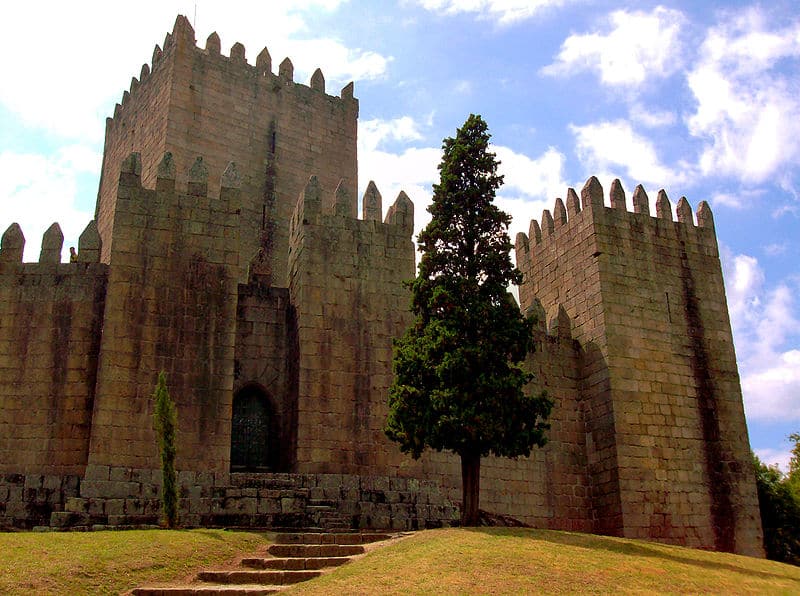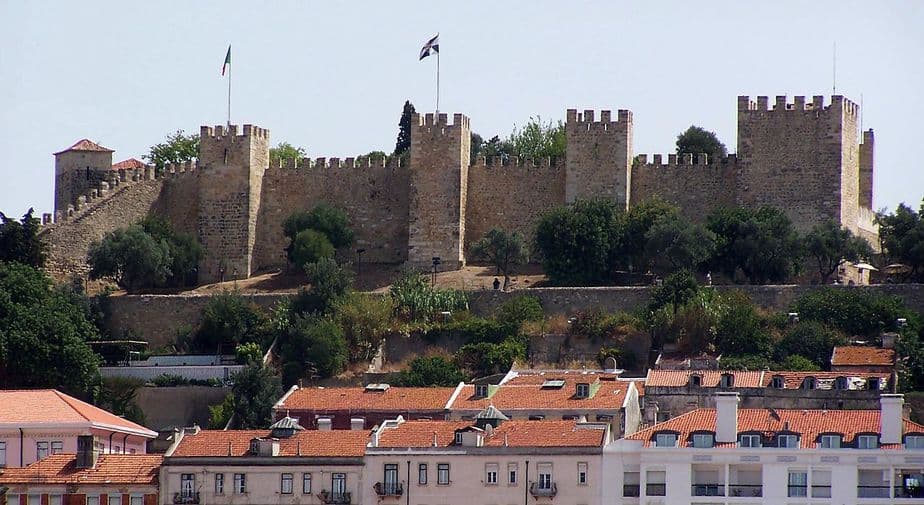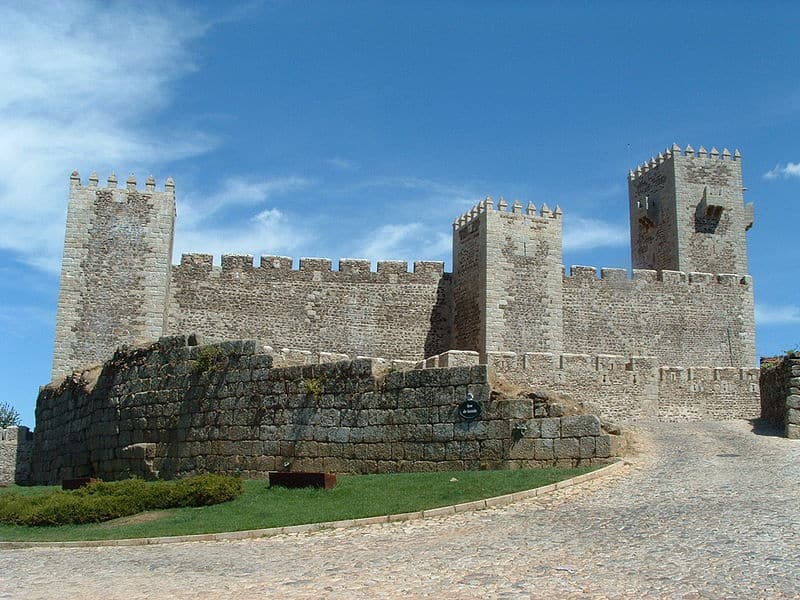Top 15 castles to visit in Portugal
Portugal is one of Southern Europe oldest nation. It offers a unique mixture of culture due to its geographic location. Different groups of people have passed through, settled, or invaded the country throughout its long history from the Romans, Carthaginians, Celts, Visigoths to the Moors. All of them have left their mark in Portugal. The official language of the country is Portuguese.
Today when you mention the name Portugal people think of football, beautiful beaches, dramatic coastlines and delicious exotic pastries. However, Portugal’s architecture is like none in Europe and this is best displayed by its numerous castles ranging from the Moorish style, Renaissance marvels, all the way to contemporary renovations that merge the past and the present in a seamless fashion. Now let’s travel back in time and explore the top 15 castles to visit in Portugal.
1. Pena National Palace (Palacio da Pena) of Portugal
This is the most popular castle in Portugal. It is famous for its mixture of architectural styles a blend of Manueline and Moor architecture. The castle is surrounded by a magnificent garden where you can stroll around and admire the colorful façade of the castle. Today it is still used by Portuguese officials for state occasions.
The castle dates back to the 19th century and is located atop a hill in Sintra. The castle’s construction was ordered by Ferdinand II as a summer retreat castle. From the castle Ferdinand II could look down onto his subjects as far away as Lisbon. The castle was passed along the Royal family until 1889 when it was purchased by the Portuguese government.
2. Castle of Montemor-o-Velho
Castle of Montemor-o-Velho is a castle so old that traces of Roman stonework may be found in the base of the keep. It’s older than Portugal is a nation, 1139. The castle is pitched on a hilltop, Monte Maior, overlooking the flood plains of the Mondego. It was declared a national monument in 1910.
Today the castle appears as it did in the 14th century, with a small keep, ruined palace, parade grounds and three churches. Since 2014, the castle has hosted the Festival Forte, an electronic music festival set in August.
3. Castle of Tomar
The Convento de Cristo in Tomar, the convent of Christ in English, is one of Europe’s greatest monumental legacies of the Order of the Knights Templar, militant monk-knights. It is listed as a UNESCO World Heritage Site and located with the castle walls. This is just one of the stunning architectural beauties within the castle come and discover more hidden gems found in this grand castle.
Built in 1160 by Gualdim Pais, the master of the Knights Templar, overlooking the central town of Tomar and the River Nabão. The castle was used by the Order to protect the country against Moor invasions. Upon the disbandment of the Order in the 14th century, the castle was used by king Manuel of Portugal.
4. Castle of Viana do Alentejo
Castle of Viana do Alentejo is a Gothic-style castle with a two-toned white and grey façade. It is octagonal with towering columns and pillars. The interior walls of the castle are adorned with spectacular 17th-century tiles. On one side of the castle is a beautiful cathedral built in the Mudejar-Manueline style.
The castle was built at the beginning of the 14th century during the reconquest and settlement of the central region of the Portuguese Alentejo. The castle is located in the heart of Alentejo.
5. Castle of Almourol
The castle is part of the reconquest castles of Portugal. Explore the ruined castle with its tall narrow keep and ramparts embellished with towers. After dark, the castle’s walls are illuminated with a floodlight that further enhances the romantic quality of this castle.
Located on the banks of the Tagus River this castle dates back to 1129. It was rebuilt again in 1171 by the Knights Templar. The castle was used to control the river trade route between the region and Lisbon, further south
6. Castle of Marvão
Perched on one of the highest points in Serra de São Mamede, 861 m above sea level, the castle provides one of the region’s best view. From the village of Marvo below with its collection of tiny, whitewashed cottages squatting over cobblestone lanes seemingly trapped in a 600-year time warp to the serene landscape created by the empty plains towards Spain.
The castle was initially built as a frontier fortress in the 13th century over Moorish ruins. It is located at the central border of Portugal and Spain. It was used to track enemy forces from Valencia de Alcántra in Spain.
7. Guimarães Castle
Guimarães Castle is an important historical landmark in Portugal and is celebrated as being the birthplace of the nation. The legend goes that this was the very spot where Alfonso won the Battle of São Mamede which resulted in the independence of Portugal.
The castle was built in 968 by order of Mumadona, Countess of Galacia as a refuge for its citizens against attacks from incoming Vikings traveling from Europe. It is located in Guimarães, northern Portugal. Extensive expansions were made to the castle during the 12th century by Henry of Burgundy and in the 14th century by Alfonso VI of León.
8. São Jorge Castle
One of Portugal’s most visited castles is a great place to experience nearly 1,000 years of Lisbon’s history. Walk along the ramparts and explore the cannon lining, underground chambers, 18 towers; Torre de Ulisses, one of the 18 towers, houses a camera obscura that projects views of Portugal’s capital onto the interior walls and the beautiful gardens that surround the castle.
São Jorge Castle is a Moorish castle that was built on the ruins of a fortification dating as early as the Iron Age in the late 12th century atop a hill overlooking Lisbon and the Tagus Rivers. It served as a fortification site for the Romans, Visigoths and the Moors.
9. Castle of Evoramonte
Originally built in 1160 in the Gothic style it was later refurbished to the Manueline style with four cylindrical towers that give the castle its iconic interesting shape. The castle has a rich history of Portugal from being home to the Romans, acting as a summer castle for king Afonso Henriques to its current status up to date.
Throughout history, the castle has played a fundamental role in Portugal political and military scenery. The highlight being it was placed where the signing of the Concession of Evoramonte on 26th May 1834 took place. This peace treaty marked the end of a six-year civil war between the liberal forces of Queen Maria II of Portugal and the Absolutist armies of Miguel of Portugal.
10. Castle of Santa Maria da Feira
This castle is one of the best well-preserved castles in Portugal and boasts of having the larges keep of the castle in the country, you will need to take 60 steps to reach the roof. As you explore this medieval casual you will encounter the rare bizarre “murder hole” built by Rui, son of Fernão Pereira. Murder holes an opening where you could pour hot oil, boiling water, rocks on an enemy.
Locals tell of a legend that the castle was constructed on top of a temple that was dedicated to a local divinity known as Bandeve-Lugo Toiraeco which was later transformed into a Marian Temple. For many years the fort served as a forward base in the Christian Reconquista from Arab invasion from the south.
11. The Castle of the Moors
The ruins of The Castle of the Moors snake along the Serra’s granite-hewn contours to resemble the Great Wall of China to the casual observer. On the grounds, you can see the ruins of a medieval church, an outline of the Moorish-era grain silos and a water cistern.
This is the first castle the Moors built when they conquered Portugal in the 8th century, hence its name. It was a common practice for the Moors to build fortresses in strategic positions in the lands they conquered. The fortified castle that was built to withstand attacks from all direction was conquered by Portugal’s first monarchy, Afonso Henriques, in 1147.
12. Castelo de Alcoutim
Within the ancient protective wall of Castelo de Alcoutim, the only small section of the wall that still remains lies an archeological museum that illustrates the history of the region. For those who are more adventurous, you can ride the only cross-border zip line ride in the world.
The castle was built in the 13th century to replace an abandoned Moorish stronghold further north. It displayed a medieval castle and medieval fort architecture style. It’s located on the banks of the Guadiana River and served as a defense against Spain and controlled the trade route along the busy waterway.
13. Castle of Óbidos
This impressive castle turned to a boutique hotel is located in the beautiful village of Obidos. There is a QR code at the entrance of each room explaining more about the past rules of the city. Castle of Obidos is regarded to be a very ‘feminine’ castle to the point where locals say that you can even sleep in its towers.
The castle is famed for being a wedding gift from King Dinis to his fiancé Dona Isabel. It displays a medieval design with well-preserved limestone and marble, towers in a cylindrical and square shape and an intricately detailed interior.
14. Castelo do Dona Chica
Castelo do Dona Chica was designed to look older than it actually is donning a medieval and Gothic façade. Its construction dates back to 1915 and was designed by architect Ernesto Korrodi for João José Ferreira Rego and his wife Francisca Peixoto Rego. The castle’s name comes from their partnership. His wife’s petite form gave forth the name “Chica.”
The castle was never finished due to lack of funding but still has a mysterious and captivating presence. Unfortunately, the castle is not open to the public but you can admire the castle’s gardens which are adorned with lush plant species from Brazil.
15. Castle Sabugal
Castle Sabugal was built on incredible important ground that was fought over for centuries by the Moors, Christians and the Jews. In 1297, the castle was given to Portugal by the Alcanicies Treaty. Today by visiting the palace you can understand why as the castle grounds are spectacular with a magnificent view of the beautiful River Coa.
The castle is hailed as Portugal’s best-preserved castle. Built in the thirteen and fourteenth centuries as a military fortress in the traditional medieval fortress style. Located on the border between Portugal and Spain it was the negotiations grounds for the boarder’s years ago. The fortress also served as a prison with Brás Garcia de Mascarenhas, the famous poet who wrote Viriato Tragic, being one of its prisoners.
Planning a trip to Paris ? Get ready !
These are Amazon’s best-selling travel products that you may need for coming to Paris.
Bookstore
- The best travel book : Rick Steves – Paris 2023 – Learn more here
- Fodor’s Paris 2024 – Learn more here
Travel Gear
- Venture Pal Lightweight Backpack – Learn more here
- Samsonite Winfield 2 28″ Luggage – Learn more here
- Swig Savvy’s Stainless Steel Insulated Water Bottle – Learn more here
Check Amazon’s best-seller list for the most popular travel accessories. We sometimes read this list just to find out what new travel products people are buying.





